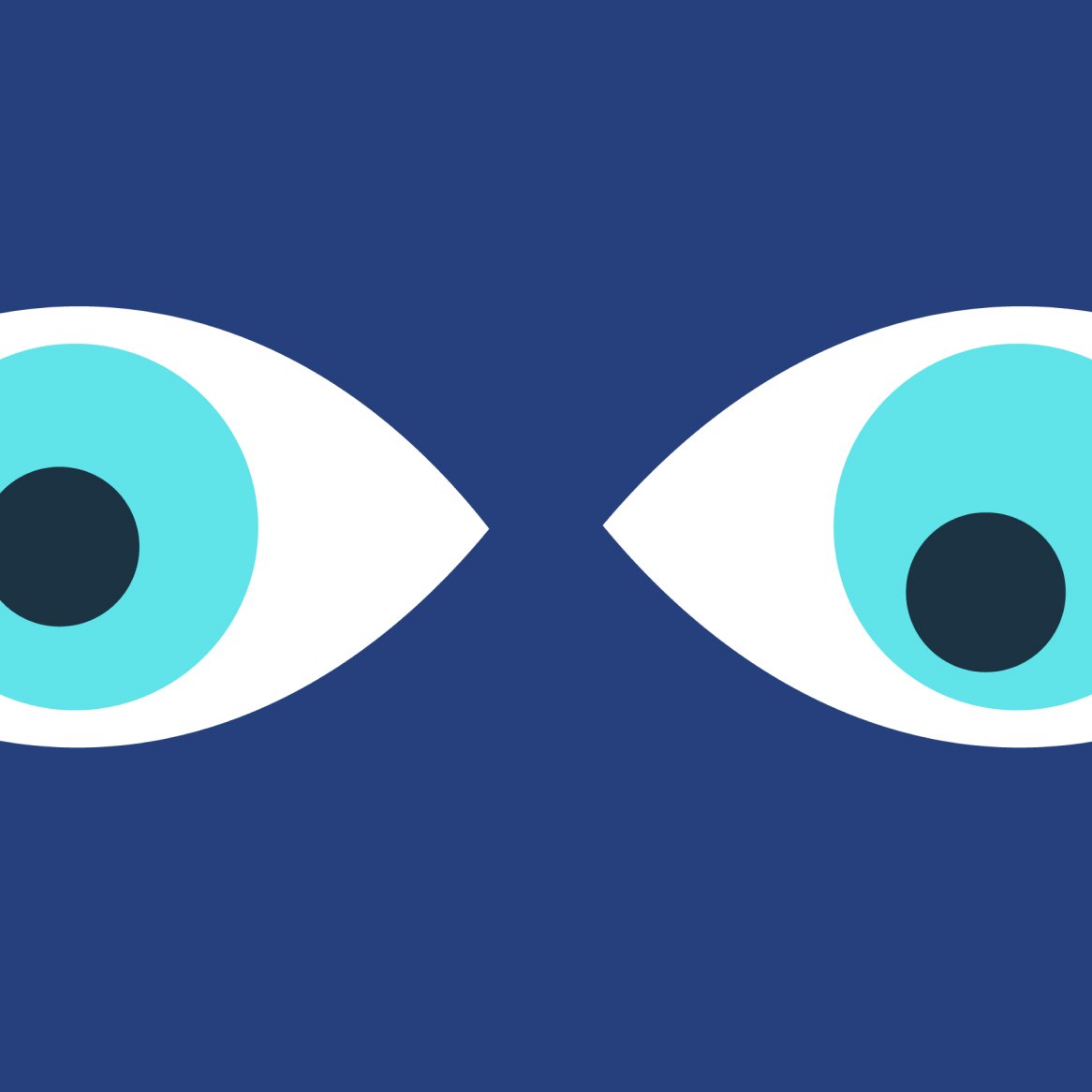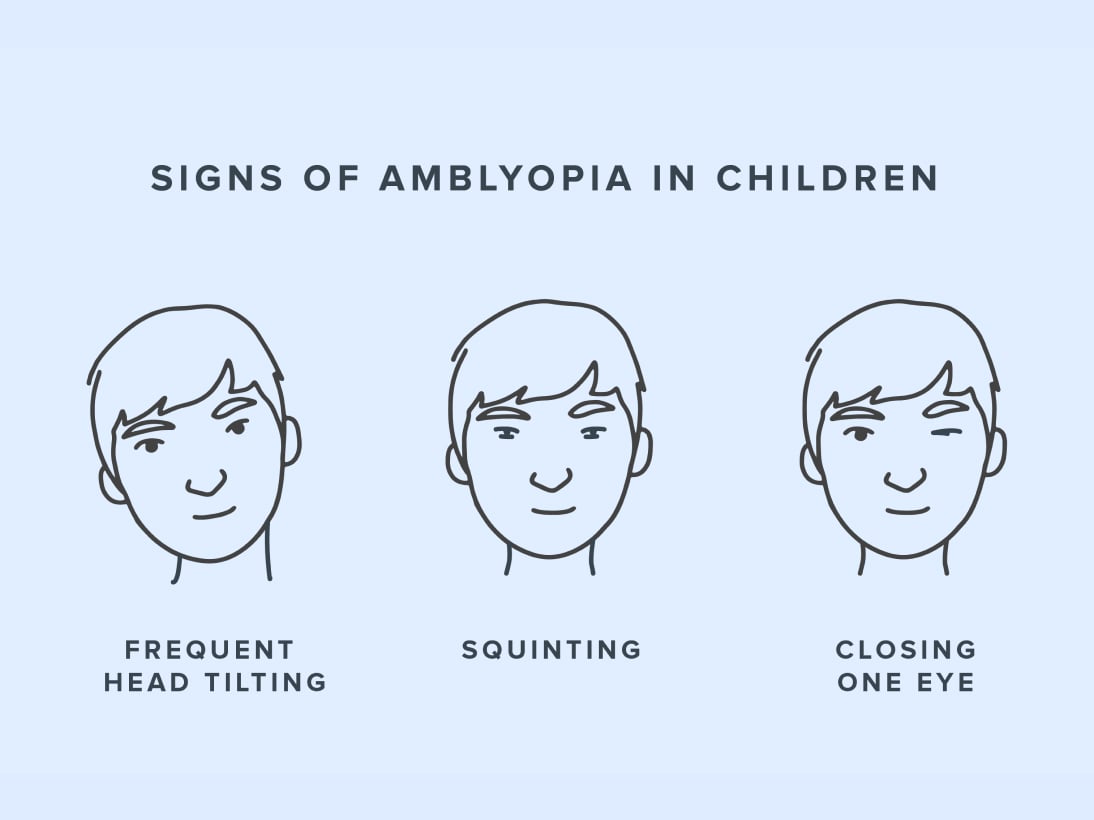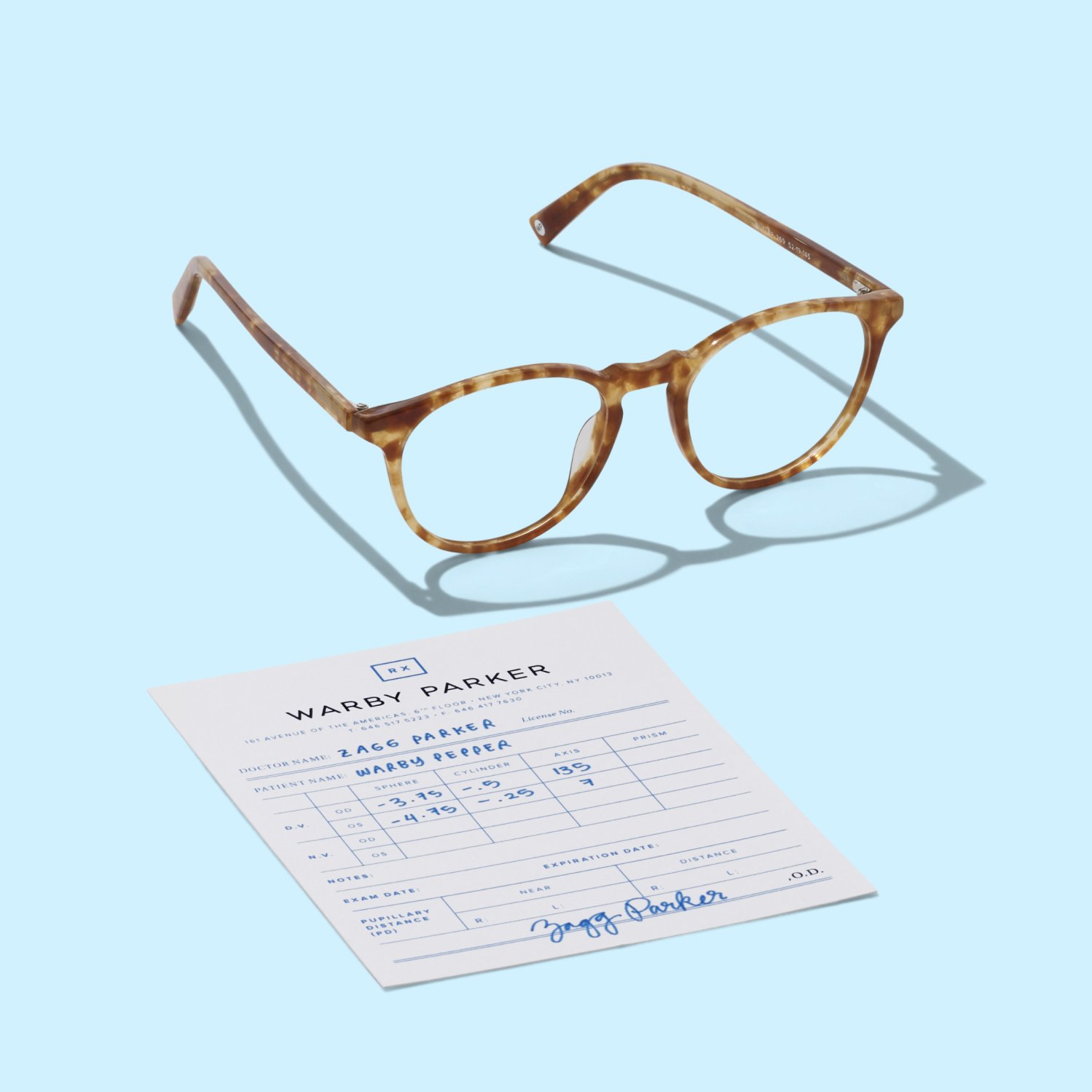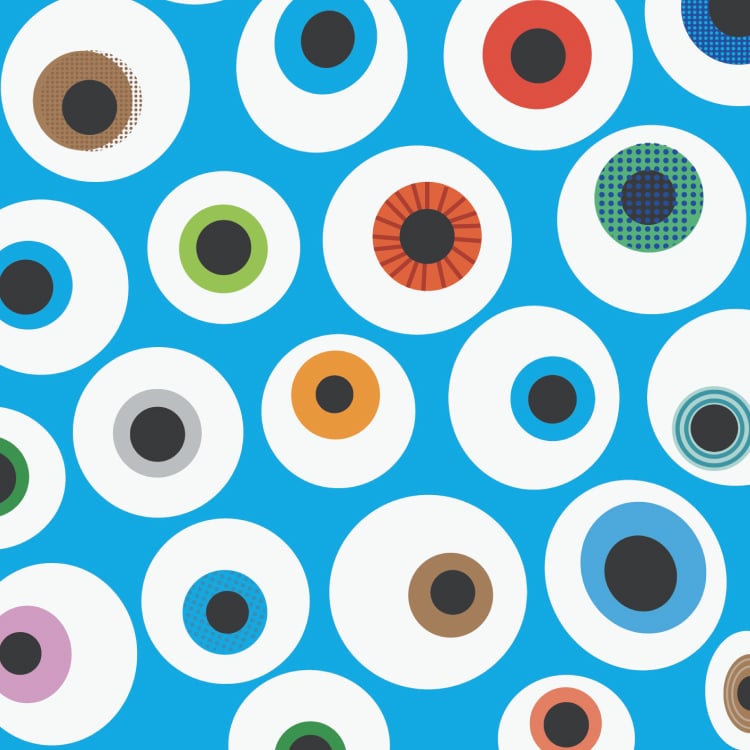Amblyopia (more commonly known as “lazy eye”) is a vision impairment that’s caused by abnormal vision development during early childhood. It usually occurs in one eye, but in rare cases, it can affect both eyes. The term “lazy eye” doesn’t actually imply laziness—it simply means that one eye isn’t working the way it should be.
In this helpful guide, we’ll look at the causes and signs of a lazy eye, how it can affect vision, and how it can be treated.
Lazy Eye Symptoms
Sometimes, a lazy eye might be easy to catch just by looking at a child’s eyes. But there are also times when a child’s behaviors might be the tip-off.
Here are some common symptoms of lazy eye:
- Uneven eyes or independent eye movements: A wandering or stray eye that travels in, out, up, or down independently of the other may be a sign of a lazy eye.
- Poor depth perception: People with a lazy eye may have difficulty telling how far or close something is. This might cause them to bump into things, especially on one side.
- Squinting or closing one eye: A child may partially or completely close one eye regularly.
- Rubbing one eye: A child may rub one eye frequently to try to eliminate blurry or double vision.
- Frequent head tilting: Children with a lazy eye may frequently tilt their heads to one side.
Lazy Eye Diagnosis
In children, doctors may be able to detect lazy eye with routine vision screening. These screenings commonly happen as part of a child’s regular check-ups.
If you suspect your child might have a lazy eye, visit your eye doctor for an exam and possible diagnosis.
What Causes a Lazy Eye?
Lazy eye happens when something (like an underlying eye condition) causes the brain to pay more attention to one eye than the other. This happens during the first 8–10 years of life (the critical period of visual development).
Eventually, the brain starts ignoring the weaker eye to avoid confusion. This can cause the vision in that eye to worsen. In severe cases, certain types of lazy eye can lead to vision loss if left untreated.
Types of Lazy Eye
So what causes the abnormal nerve behavior in the first place? There are three general types of lazy eye based on the causes.
Refractive Amblyopia: Refractive errors like nearsightedness (myopia), farsightedness (hyperopia), and astigmatism are common eye issues. Refractive amblyopia can happen when one eye has a refractive vision issue that is far worse than the other eye.
For instance, one eye may be nearsighted while the other is farsighted. Or one eye might have severe astigmatism while the other doesn’t. The brain tends to favor the “better” eye, and vision worsens in the other eye.
Strabismic Amblyopia (Muscle Imbalance): Strabismus may be referred to as crossed eyes. It’s when the eyes aren’t aligned, and one eye points in a different direction than the other. With strabismic amblyopia (say that ten times fast), the brain “tunes out” the misaligned eye and vision in that eye declines.
Deprivation Amblyopia: With deprivation amblyopia, one eye is deprived of visual information because something is blocking it. This can make vision in that eye unclear.
Here are some examples of conditions that can cause this sort of deprivation or blocking of visual information:
- Congenital or childhood cataract: This is a clouding of the eye’s lens. It can cause blurred or distorted vision in the affected eye, which can lead to amblyopia.
- Corneal scar: A healed corneal ulcer (a wound on the cornea often caused by an infection) may leave behind scar tissue. This scarring can impair vision and lead to amblyopia.
- Droopy eyelid (ptosis): Ptosis involves an eyelid drooping down over the eye. As you can imagine, this could certainly get in the way of seeing properly.
- Injury to the eye: Trauma to the eye can cause problems like swelling, muscle loss, or nerve damage that can interfere with the eye’s vision.
- Glaucoma: Glaucoma happens when the optic nerve is damaged. It typically causes vision impairment, which can sometimes lead to amblyopia.
Who Gets Lazy Eye?
Lazy eye or amblyopia often occurs in young children. It’s the most common cause of childhood vision problems—up to 3% of children have lazy eye. But early diagnosis and treatment go a long way in correcting it.
The risk of lazy eye increases with:
- Premature birth
- Developmental delays
- Family history of lazy eye
Lazy Eye Treatment
Treatment for a lazy eye will depend on its cause and might involve several methods, either at once or in sequence. Some possible ways to treat lazy eye are:
- Corrective lenses: Corrective lenses (eyeglasses or contact lenses) can correct a lazy eye too, especially if it’s from nearsightedness, farsightedness, or astigmatism.
- Eye patch or filter: Wearing an eye patch pirate-style over the healthy eye can encourage the affected eye to work harder. Sometimes, a filter is put over the stronger eye’s eyeglass lens to blur that eye’s vision and motivate the weaker eye to do a better job.
- Vision therapy: A personalized treatment program can be designed to strengthen visual skills (such as eye tracking, focusing, and hand-eye coordination) and information processing.
- Atropine eye drops: Eye drops containing atropine are an alternative to a patch or filter. Using the drops temporarily blurs the healthy eye’s vision. This makes the brain work with the weaker eye, improving it over time.
- Surgery: There is no such thing as a “lazy eye” surgery. However, there are surgical procedures that can help with some cases of lazy eye. Doctors might recommend strabismus surgery to help the eyes work together better. Or if a cataract is causing a lazy eye, cataract surgery can correct or improve the problem.
Early Treatment Is Key
If you have questions about lazy eye, you can reach out to your eye doctor. The earlier you get treatment for lazy eye, the better the chances for complete correction. Tackling amblyopia early can also help prevent vision loss.






